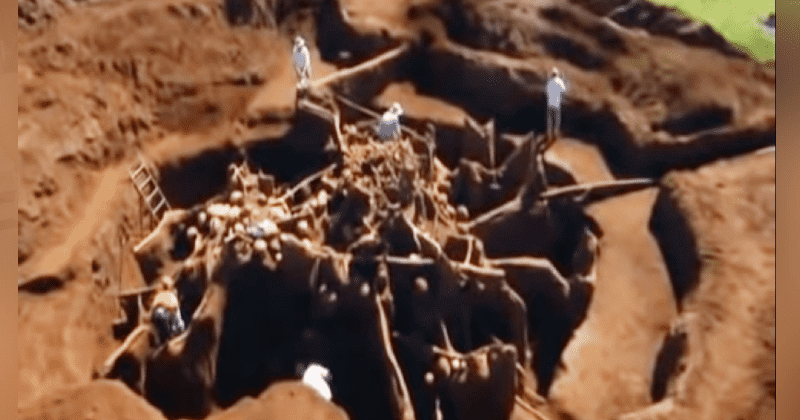The Soviet Moon Rocket: Lighting the Biggest Candle Ever
The Soviets had their plans for the moon, too. Their spacecraft, showing the traditional Russian preference for proven technology, was a modification of their orbital Soyuz spacecraft, and the same heritage is visible in the lander. Only two cosmonauts would make the trip, and lander only carried one, but from a prestige viewpoint this didn't matter. After Apollo 11, this hardware was basically stuffed in a bunker and no longer spoken of. The Soviets claimed they'd never been in a race for the moon, and even such knowledgeable people as Walter Cronkite believed them.
U.S. intelligence, of course, knew better, and they knew why the race became hopeless for the USSR: the N1. The N1 was the equivalent of the Saturn V, a booster that could carry an entire lunar mission on one launch. It was the bottleneck for lunar ambitions.
N1 mockup on the pad in 1967 (NASA)
Unlike the spacecraft, the N1 was like nothing the USSR had ever built. The Soviets were superb at building reliable medium-lift rockets in quantity, but every stage of the N1 was new. It suffered from a problem that had always plagued Soviet launchers: the metallurgy and skill to build giant engines like the Saturn V's R-1 was still beyond them. So they did what they knew how to do by clustering engines.
The first stage of the N1 had a stunning 30 engines on it. Unlike SpaceX rockets, which deliberately use this approach to hold costs down by mass-producing reliable engines, the Soviets didn't have a choice, and, with 1960s technology, tried to make it work.
The Soviet human spaceflight program started late on the N1, in October 1965. Only three months later, Sergei Korolev died. Like a combination of Wernher von Braun and James Webb, Chief Designer Korolev was the organizational and technical genius who made the human spaceflight program work. Without him, individual design bureaus and leaders squabbled over titles and responsibilities and, of course, budgets. His successor, Valery Mishin, was not up to the job: the program's highly capable key engineers, Valentin Glushko and Mikhail Tikhonov, could do only what the fractured command structure permitted. This exacerbated an already challenging effort.
Designers opted for a new engine, the NK-15 (whose creation bypassed the experienced engine maven, Glushko), with 24 in a ring and six in the center. The plumbing and control systems were nightmares. The first stage was never fired in a test like the recent Green Run of the SLS. Only the individual engines were tested.
This was a fatal decision. Thirty engines running in a huge structure moving in three dimensions at high speed created torques, vibrations, fluid dynamics, and other forces engineers could only make rough estimates of, and many they had not even guessed at. There were four test launches: two in 1969, one in 1971, and one in 1972, when the rocket's reason for existence was no longer clear. All failed in first-stage flight.
The remaining booster hardware was broken up. Some of the knowledge and technology went into the Energia booster, which itself had only a few flights. The greatest rocket-building effort by the nation that led in space for years produced, in the end, little of importance.

